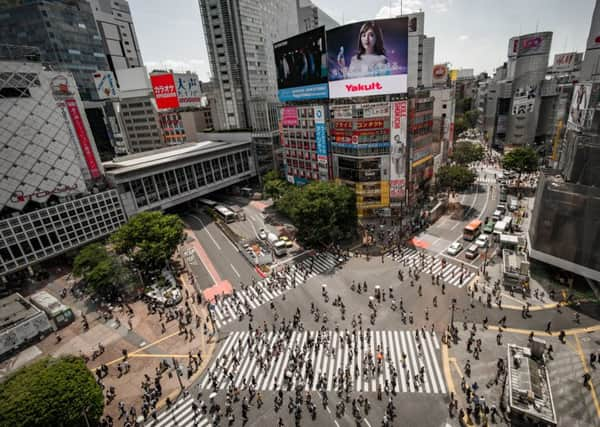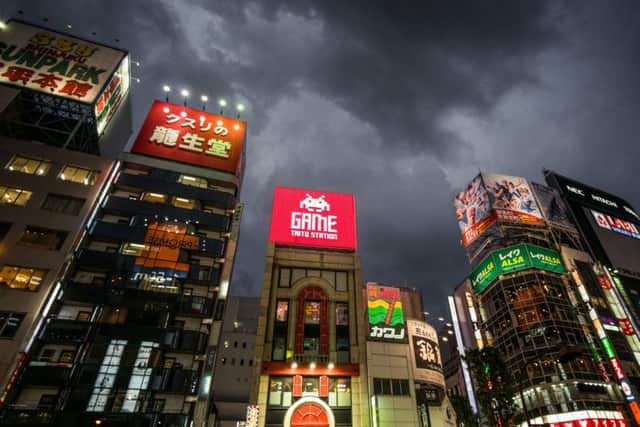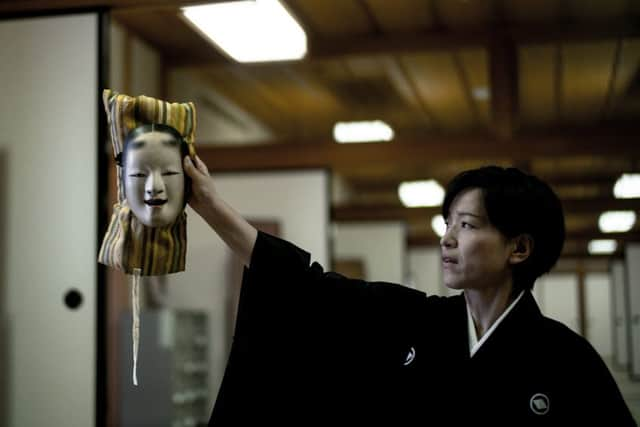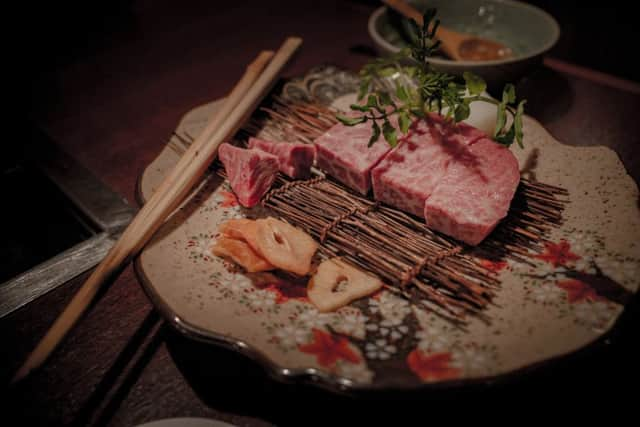Tokyo, visit Japan’s sporting host capital


As I wait for my flight at Heathrow, my friend Tim phones and we talk about the Japanese adventure I’m about to embark on. But no sooner have I hung up than I realise the trip might never happen as I’m further from my departure gate than I thought. I can only run so fast (ie not fast at all) – but luckily I make it and so can spare you my back-up feature about airport breakfasts.
My Tokyo home for the next few days is at Keio Plaza Hotel. The first high-rise hotel to be built in Japan, and at the time (the early 70s), the 178 metres and 47 floors made it the country’s tallest building. Although now one of many Shinjuku skyscrapers, it still holds its own with the new towers on the block. It’s an imposing structure, and one which did not go unnoticed by Godzilla in 1984, when the monster caused it some significant damage onscreen. Fortunately no signs of the attack remain today.
Advertisement
Hide AdAdvertisement
Hide AdMy luxurious and spacious room is one of Premier Grand status, which includes exclusive access to the top-floor lounge where I enjoy breakfast and pre-dinner drinks. Among the other 1,434 rooms there are standard rooms, traditional Japanese family suites, accessible rooms and the main event, the Imperial Suite. The latter has been preserved in a time capsule containing the best in 1970s Japanese art and design. Muhammad Ali stayed in the rooms, designed by Isamu Kenmochi, while in town for his infamous 1976 fight against Antonio Inoki.


I drag myself away from the stunning city skyline views from my room and attempt to negotiate the maze-like Shinjuku Station. As soon as the decision was made that Tokyo would host the 2020 Olympics, work began simplifying the transport maps and station information. Despite this it is not uncommon to see some of the 3.5 million commuters walking through the station on their smartphones working out which exit they should take.
The first meal of the trip had to be sushi, so on to lunch at Tsukiji Sushisen, Asakusa. Here I put my new iPhone app to use. Simply hold the camera over any Japanese characters and it will instantly translate. If the purpose of the app were to randomly generate abstract English words I’d rate it five stars. If you need to order food while the kitchen staff are poised for instructions, it earns zero stars. Fortunately after some helpful recommendations the table is soon covered in a variety of colour and texture.
In fact, it was at this meal that I re-learned the childhood lesson that I mustn’t point. I’d merely asked what kind of fish were swimming in the tanks, yet in less than 10 minutes one of them was being presented to me on a plate. Mackerel in the form of dancing sashimi. To paraphrase Spinal Tap’s Nigel Tufnel, how much more fresh could this be? None more fresh.
Next up is a visit to nearby Sensō-ji, the oldest temple in Tokyo, and the most visited spiritual site in the world. Despite the crowds (many adorned in hired kimonos for selfie purposes) there is still a respectful calm around the shrines. A walk through the surrounding area brings me to Nakamise shopping street, 250 metres of gift and souvenir shops and possibly the second most visited site in the world.


My first glimpse of Tokyo at night, in all its neon splendour, is breathtaking. It would be a cliché to say it looks like a scene from Blade Runner. So I will say it looks like a scene from Blade Runner 2049. Meandering through city lights I find myself at Torihei in Shinjuku, a small Yakitori restaurant of some 30 seats. Eight delicious courses of Japanese-style skewered chicken are prepared, each a different part of the bird. Sometimes it’s good when your translation device doesn’t work.
If you don’t have much time to explore, the hotel itself puts on a range of different cultural experiences for guests. They include kimono wearing, flower arranging, traditional tea ceremonies and even hanging exhibitions, exploring both the contemporary and traditional, from samurai to manga.
It’s a traditional evening for me as I dine at one of Keio Plaza’s 11 restaurants for seasonal cuisine, Soujuan. Tonight’s menu celebrates Tango no Sekku (children’s day), themed around kabuto armour, and consists of seven beautiful courses including delicate portions of rock trout, wagyu beef, bonito and wild plants.
Advertisement
Hide AdAdvertisement
Hide AdAfter the meal, seduced by the promise of a skyline view from the top of a bar, I head to Golden Gai, a shanty-style area of narrow alleyways famed for its nightlife. I should have known the view from some 40 floors lower than I had been accustomed to could not compete. In a small room up some treacherous stairs I found myself sticking my head out of a Velux window to see a few neighbouring hotels and a frugal portion of sky. However, the charm and contrast with the rest of Shinjuku make a visit to the area a must.


An early start the next day to visit Tsukiji fish market near the upmarket Ginza area is probably not what’s needed after a night out in Golden Gai. However, the market’s energy is infectious and antidotal. The inner, wholesale market is all but closed to visitors but the outer market is popular with tourists visiting the sushi restaurants and shops selling seafood, kitchen supplies and groceries.
At The National Noh Theatre, Shibuya, my guide is principal actor Yoko Layer. Noh, the world’s oldest theatrical art, still regularly performed today, is traditional storytelling in musical form with masks. Yoko gets me to sing on stage and luckily there is no-one in the 600 seat auditorium to hear my attempts. The theatre has united with Keio Plaza to bring workshops and exhibitions to the hotel.
The final night at the Plaza, I have a meal at the Aurora Sky Lounge, open to nonresidents, to admire the view and sample the Western style menu. On the drinks list are the six cocktails created by Keio’s award-winning bartenders specifically for the Rugby World Cup. I sample most before being stretchered off.
After a final day shopping in Shinjuku, my last Tokyo restaurant is Suzume No Oyade, which specialises in okonomiyaki, Japanese style pancakes. The food kept coming, I lost track of time and suddenly I needed to hurry via the infinite corridors of Shinjuku station to reach my airport connection. What started out as a rush to make it to Japan ends with a frantic dash to make it home. But hopefully it won’t be long until I’m rushing to return to Tokyo, the greatest host on earth.
FACTFILE
Flights with BA £1,554, London Heathrow to Haneda, Tokyo
www.britishairways.com
Keio Plaza Hotel, Tokyo
Club floor Premier Grand rooms start from around £330.
Standard rooms start from around £170.
www.keioplaza.com
Rugby World Cup
20 September – 2 November, 2019
www.rugbyworldcup.com
2020 Summer Olympics
24 July – 9 August, 2020
www.tokyo2020.org